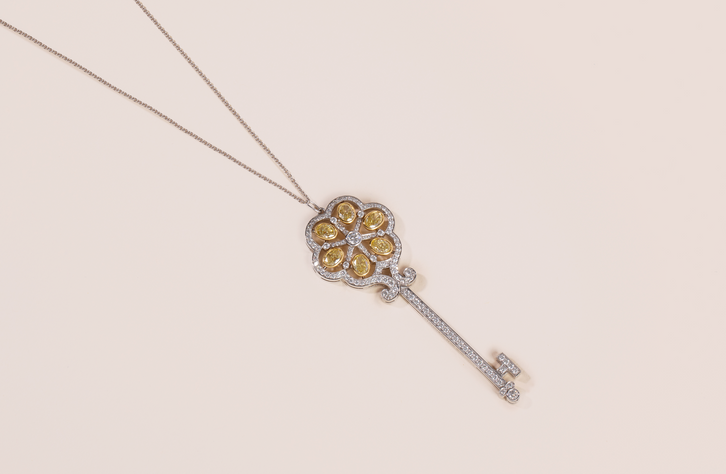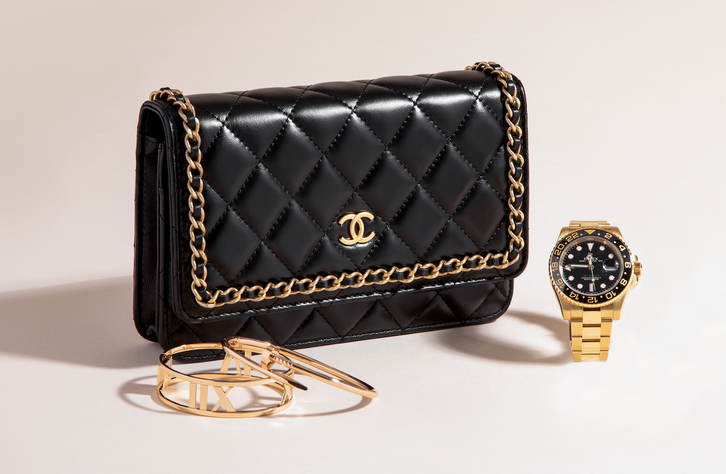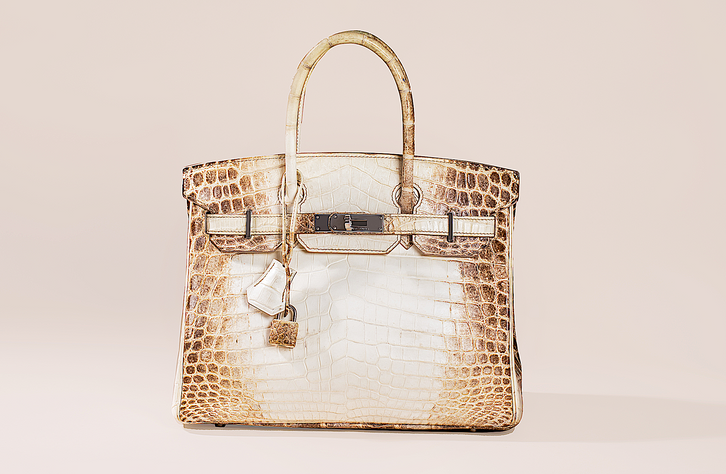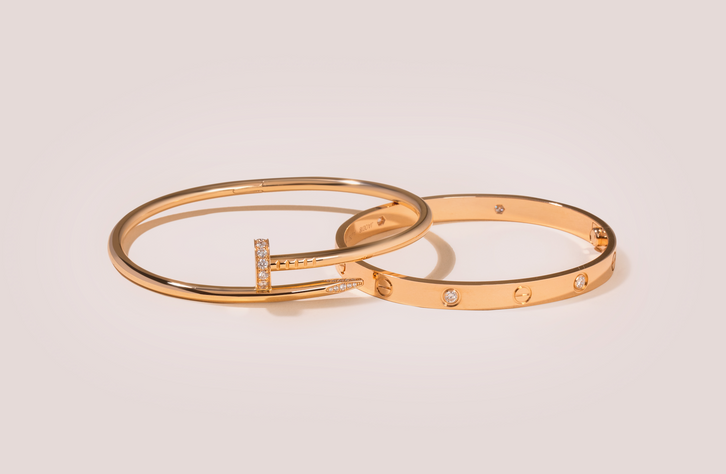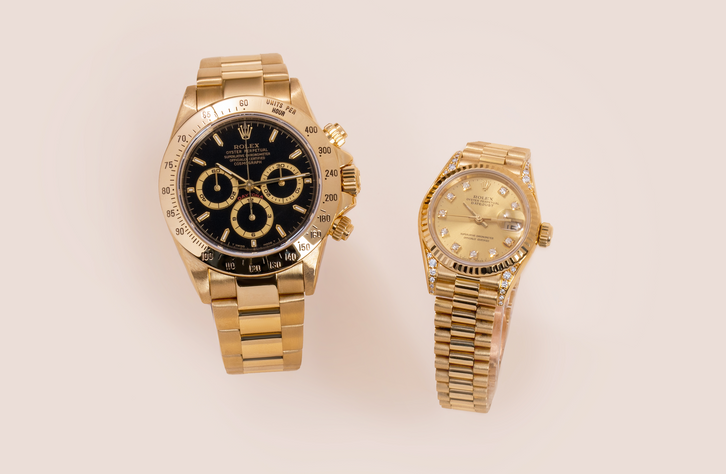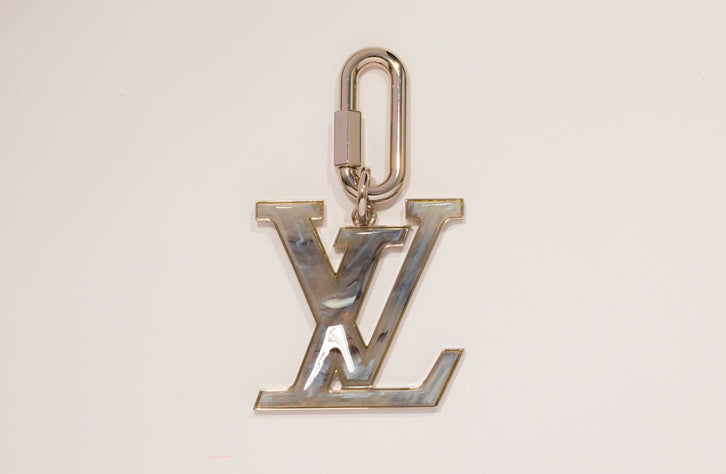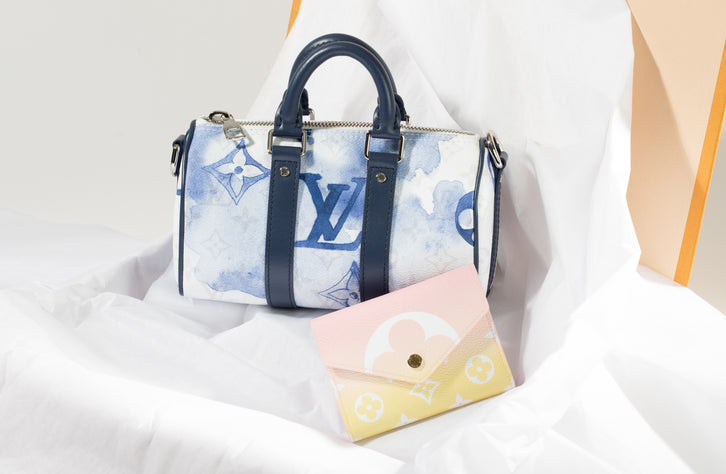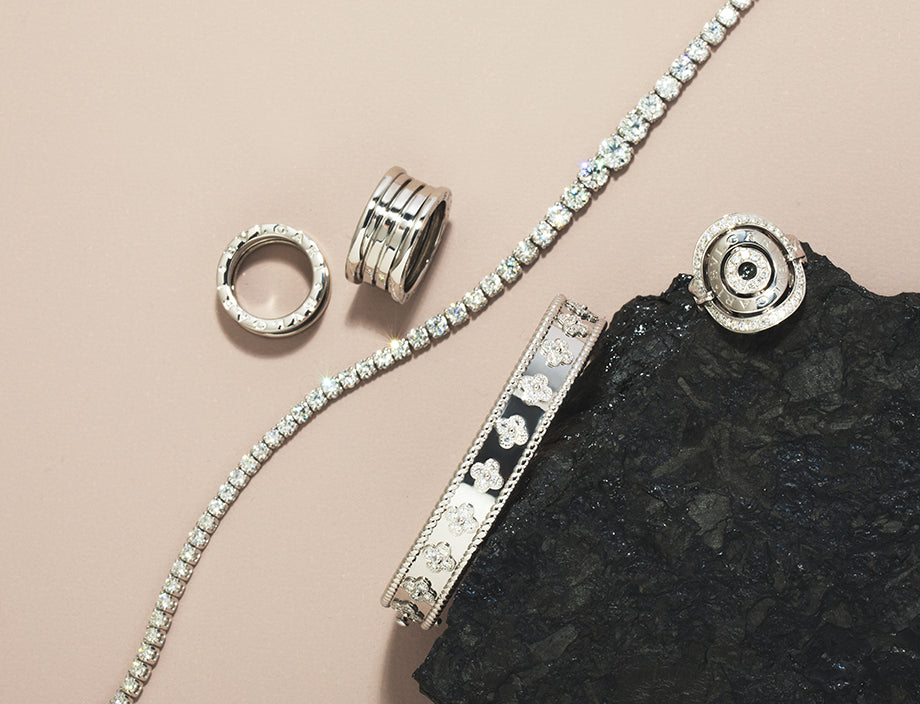The Hope Diamond is an antique blue diamond dating back to the 17th century and hails from the Kollur mine in India. Often described as the most famous diamond in the world, the Hope Diamond has lived in numerous continents with various owners but now resides in the Natural History Museum in Washington D.C. and is owned by the Smithsonian Institute.
Key Facts About The Hope Diamond
- Name: The Hope Diamond
- Price estimation: $200-350 million USD
- Colour grade: Dark grayish-blue
- Cut grade: Antique cushion
- Dimensions: Length 25.60 mm, width 21.78 mm, depth 12.00 mm
- Carat weight: 45.52 carats
The History Of The Hope Diamond
From India To Europe
Believed to originate from the Kollur mine in India and to have featured in an Indian temple before being stolen, the Hope Diamond began as a much larger stone. In the 17th century, French merchant Jean Baptiste Tavernier purchased this 112 3/16 carat diamond, commenting that the stone was a beautiful violet. The stones first cut was triangular in shape and it quickly became known as the Tavernier Blue Diamond. In 1668, Tavernier sold the diamond to King Louis XIV of France. Sieur Pitau, a court jeweler, then recut the stone into a 67 1/8 carat stone in 1673, after which it became known as the Blue Diamond of the Crown.
In 1749, King Louis XV had the stone recut in a piece of ceremonial jewellery for the ritual the Order of the Golden Fleece. Due to increasing security concerns, the jewels in the French government treasury, including the Hope Diamond, were turned over to the French government. While the Hope Diamond was acquired by the French government in 1791 as a means of augmenting security, this mission failed. One year later, in 1792, the French Blue Diamond was stolen during the French Revolution.
Reappearance Of The Hope Diamond
Decades later in 1812, a deep blue diamond was found with the English diamond merchant, Daniel Eliason. Strong evidence leads historians to believe that this diamond was a recut version of the previously stolen French Blue Diamond. Evidence also suggests that the Hope Diamond was held by Englands King George IV from 1812-1830. In 1830, King George IV died with massive personal debts, leading historians to believe that the Hope Diamond was sold in order to compensate for these debts. The Hope Diamond later resurfaced in a catalogue of the gem collection of Henry Philip Hope in 1839, which is how the stone got its current name. The diamond was set in a medallion and surrounded by smaller white diamonds.
Following Henry Phillip Hopes death in 1839, his jewel collection was split up among his family. His nephew Henry Thomas Hope was fortunate enough to acquire the Hope Diamond, which he eventually passed to his grandson Lord Francis Hope. For the most part, Thomas Hope kept the gem in a vault except for when he displayed it in the Great Exhibition of London in 1851 and at the 1855 Exposition Universelle in Paris. In 1901, Lord Francis Hope asked his sisters and the Court of Chancery if he could sell the gem in order to pay off debts; his request was approved.
Who Was The Last Private Owner Of The Hope Diamond?
Hope sold the gem to a dealer in London who quickly sold it to Joseph Frankels and Sons of New York City. Joseph Frankels and Sons of New York City withheld the diamond in New York until they were desperate need of money and sold it to Selim Habib in 1908 and later resold it to Pierre Cartier in 1910. Cartier attempted to sell the diamond to Evalyn Walsh McLean, a mining heiress with a penchant for wildly expensive gems, but she initially rejected the offer. Evalyn was not fond of the setting, however once Cartier reset the diamond by mounting it as a headpiece on a three-tiered circlet of large white diamonds, Evalyn could not resist. In 1911, the sale was finalised. Evalyn owned the diamond for 36 years until her death in 1947, becoming the last private owner of the Hope diamond.
The Hope Diamond Moves to the Smithsonian
Harry Winston Inc. of New York City purchased Mrs. McLean's entire jewellery collection upon her death, including the famous Hope Diamond. In 1958, Winston Inc. of New York City donated the Hope Diamond to the Smithsonian, exponentially increasing attendance to the Smithsonian as well as public interest in the stone.
The diamond has left the Smithsonian a total of 4 times: first in 1962, to be exhibited for a month at the Louvre in Paris. Then, in 1965 the diamond traveled to South Africa where it was exhibited in Johannesburg. In 1984 the diamond was lent back to the original donors, Harry Winston, as part of the company's 50th anniversary celebration. Lastly, in 1996 the Hope Diamond was taken out for some minor restoration work at Winston Inc. in New York.
The Hope Diamond Today
Today the Hope Diamond remains at the National Museum of History in Washington D.C. After a few slight alterations to the setting of the diamond, the diamond was returned to its historic setting on January 13th, 2012.
How Much Is The Hope Diamond Worth?
As of 2019, the Hope Diamonds estimated value is $200-350 million, however the Smithsonian Institute claims it is priceless as it is irreplaceable.
The Curse Of The Hope Diamond
The Hope Diamond has long been rumoured to be cursed. A string of bad luck is said to have fallen upon many owners of the stone:
- Tavernier is said to have been "torn to pieces by wild dogs in Constantinople".
- Louis XIV died of gangrene.
- Louis XVI and Marie Anthoinette were executed by guillotine.
- The last private owners of the diamond, Evalyn and Edward McLean, divorced, lost their firstborn in a car crash, lost their daughter to suicide, and Edward was later committeed to a psychiatric hospital.
- The mailman who delivered the Hope diamond to the Smithsonian suffered a series of accidents in the years after: a crushed leg and a head wound from separate automobile accidents, the death of his wife from a heart attack and his home partially destroyed by a fire.
However, experts say that this is solely superstition. Some say that this myth was fabricated as a method to increase publicity and interest in the diamond.
